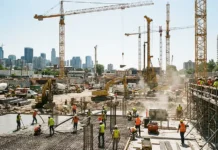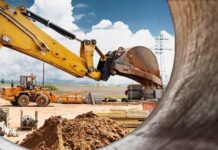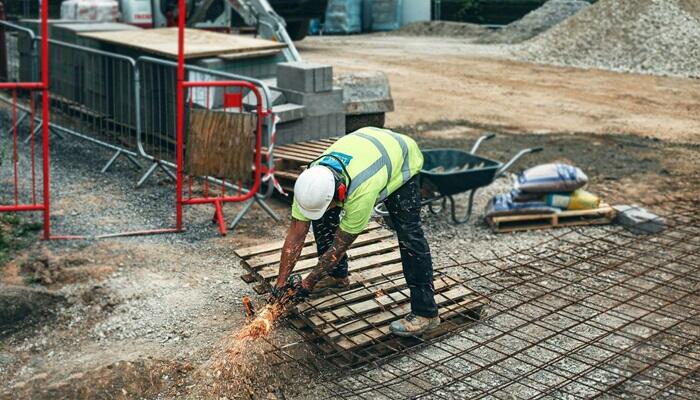From bustling construction sites to heavy-duty manufacturing floors, hard hats are a familiar sight and an essential piece of protective gear in various industries. While most workers understand that wearing a hard hat is vital, few know the science behind how these helmets protect the brain. A closer look reveals that these helmets are carefully engineered to prevent potentially life-altering injuries, specifically traumatic brain injuries (TBIs), by absorbing, distributing, and deflecting impact forces. Understanding the technology and engineering behind hard hats can not only foster better compliance in wearing them but also underscore the critical role they play in occupational safety.
The Anatomy of a Hard Hat: Key Components
A standard hard hat consists of several components, each with a unique function to maximize protection:
- Outer Shell: The outer shell, usually made from materials like high-density polyethylene (HDPE), polycarbonate, or other strong polymers, serves as the first line of defense. This hard shell is designed to withstand direct impact, deflect objects, and spread the force across a wider area.
- Suspension System: Inside the outer shell is the suspension system, which is one of the most crucial elements in brain protection. Typically made from nylon or webbing, the suspension system creates a gap between the outer shell and the head, providing cushioning that helps absorb impact energy. By suspending the head slightly away from the shell, the system reduces the amount of force transferred directly to the skull and brain.
- Foam or Padding: Some hard hats include foam padding in the crown or around the sides, which provides extra cushioning and enhances comfort. This padding is particularly useful in dampening vibrations, which can be generated when the helmet encounters minor bumps or repetitive, low-intensity impacts.
- Chin Strap: While often overlooked, the chin strap plays an essential role in keeping the hard hat secure. During falls or accidental slips, the chin strap ensures the helmet stays in place, maximizing protection.
How Hard Hats Prevent Traumatic Brain Injuries
1. Absorbing and Dispelling Impact Forces
The brain is highly vulnerable to sudden accelerations or decelerations. When the head strikes an object, or when an object falls on the head, the rapid impact can cause the brain to collide against the inside of the skull, leading to concussions or more severe TBIs. Hard hats are designed to absorb and dissipate this force before it reaches the skull and brain.
The outer shell of the hard hat spreads the impact force over a larger surface area, reducing the likelihood of a localized fracture or penetration injury. Meanwhile, the suspension system and padding absorb the remaining force, acting like shock absorbers. This design helps to lessen the intensity of the impact, lowering the chance of brain injury.
2. Reducing Rotational Forces
Rotational forces are a major cause of brain injuries. When the head experiences a twist or jolt from an angular impact, the brain’s delicate tissues can be damaged, leading to more complex TBIs. Hard hats, especially modern designs with optimized suspension systems, help minimize these rotational forces by restricting abrupt head movements. The padding and suspension system create a slight delay in movement, allowing the helmet to take on part of the rotational force and limiting how much it’s transmitted to the brain.
3. Deflecting Penetrative Forces
Construction and industrial sites are filled with sharp tools, equipment, and materials that can cause serious injury upon contact with the head. The robust materials used in the outer shell of a hard hat are specifically selected for their resistance to penetration. When struck by a sharp or pointed object, the shell deflects the force, preventing the object from penetrating and reaching the skull.
This feature is especially useful in industries where workers are at risk from falling objects, tools, or debris. The hard hat’s outer shell essentially acts as a shield, protecting workers from some of the most dangerous types of accidents that could cause skull fractures and deep head wounds.
Innovations in Hard Hat Technology
While the classic hard hat design has provided solid protection for decades, technological advancements have led to improvements in materials, design, and comfort. Some of the latest innovations include:
- Impact Sensors: Many modern hard hats now come equipped with sensors that detect impact levels and can alert both the worker and the management if a potentially dangerous impact occurs. This feature enables immediate medical evaluations, ensuring that even seemingly minor incidents are taken seriously.
- Enhanced Shock-Absorption Materials: Newer materials, such as expanded polystyrene (EPS) or expanded polypropylene (EPP), offer improved shock-absorption properties. These materials have a higher capacity to dissipate energy than traditional padding, which provides greater protection against high-impact collisions.
- Heat and Ventilation Control: Working in hot environments can be uncomfortable and increase the risk of heat-related illnesses. Advanced hard hats now incorporate ventilation systems or cooling pads, allowing air to circulate and reduce heat buildup inside the helmet.
- Integrated Eye and Ear Protection: Some hard hats now include built-in safety visors or ear protection, enhancing overall safety by providing protection for multiple vulnerable areas in one piece of equipment. This is particularly beneficial in settings with high noise levels or where flying debris is common.
When and Where Hard Hats Are Essential
While hard hats are required in many industries, particularly construction, manufacturing, and mining, their use is essential in any environment where head injury risks are present. Jobs that involve working with heavy machinery, in confined spaces, or around elevated structures all present potential hazards for head injuries.
Additionally, hard hats play a vital role in occupations outside traditional industrial roles, such as in utility work, forestry, and even some healthcare settings where equipment and facilities can pose risks.
Promoting a Safety Culture: Proper Use of Hard Hats
For maximum effectiveness, hard hats must be worn properly and well-maintained. Workers should regularly inspect their hard hats for signs of wear, such as cracks, dents, or frayed suspension straps, and replace them as necessary. Additionally, maintaining compliance through regular safety training and promoting a culture of safety ensures that workers understand the importance of wearing hard hats.
Final Thoughts
The science behind hard hats reveals a thoughtfully designed piece of equipment that goes far beyond just being a requirement. By absorbing, dissipating, and deflecting forces, hard hats prevent traumatic brain injuries, protect lives, and support a culture of safety across high-risk industries. Through ongoing innovations and adherence to safety standards, hard hats remain an essential tool in preventing serious brain injuries and ensuring that workers return home safe and sound each day.































